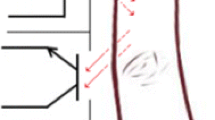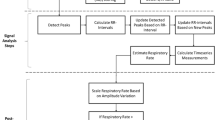Abstract
In recent years, the number of patients with mental illness due to mental stress has been increasing. Therefore, the evaluation of mental stress in daily life is necessary to prevent a mental illness. Conventional evaluation of mental stress uses biological information such as respiration, heart rate, saliva, and photoplethysmography (PPG). Among them, PPG is measurable by a daily smartwatch. Therefore, we examined the possibility of evaluating mental stress using PPG obtained from a smartwatch. In the mental stress evaluation, we focused on the photoplethysmographic amplitude (PPGA), which is the characteristic point of PPG. PPGA can be used to evaluate mental stress even with intermittent data. This is suitable for mental stress evaluation when the data from smartwatches may not be procured due to body movements. In contrast, the accuracy of acquiring PPGA from a smartwatch might be low owing to various factors such as changes in blood flow or skin temperature. Hence, in this research, we proposed a correction method to obtain a stable and accurate PPGA. In our experiment, the effectiveness of this method was examined by comparing the photoplethysmograph data and corrected data of the smartwatch after measuring with the photoplethysmograph and smartwatch simultaneously. Our results confirmed that the proposed method procures the PPGA with high accuracy.
You have full access to this open access chapter, Download conference paper PDF
Similar content being viewed by others
Keywords
1 Introduction
In recent years, the number of patients suffering from mental illness due to stress has been increasing. Therefore, it is necessary to evaluate mental stress in daily life to prevent mental illness. Conventionally, mental stress is evaluated using a method that employs biological information such as respiration, heart rate, saliva, and photoplethysmography (PPG). Among these biological parameters, PPG can be measured with a smartwatch and can be monitored on a daily basis.
Heartbeat R-wave interval (RRI) is a feature point that can be used to obtain an index of autonomic nervous activity for metal stress evaluation [1]. The RRI is highly correlated with the time interval between the maximum and minimum points of the PPG. Thus, this interval is used for general mental stress evaluation by PPG. However, this evaluation method may be affected by respiration, and its accuracy may decrease [2]. Hence, we focused on the photoplethysmographic amplitude (PPGA), which is another feature point. PPGA is the amplitude from the minimum to maximum points of the PPG, and reflects the blood pressure and state of blood vessels [3, 4].
However, there are three problems in obtaining the PPGA from a smartwatch.
-
1.
The minimum and maximum points of the PPG waveform change greatly owing to the fluctuation of the baseline.
-
2.
There is a possibility that the minimum and maximum points cannot be obtained accurately because of the low sampling frequency.
-
3.
Depending on the position of the arm, the gravity of the blood flow path and the state of the blood vessels change and an accurate PPGA may not be obtained.
Addressing these problems, in this study, we propose a correction method to obtain the PPGA.
2 Proposed Method
The proposed method deals with the aforementioned problems of the PPGA using the following three processes.
-
1.
Exclusion of outliers, such as body motion
-
2.
Processing to reduce the influence on PPG due to baseline changes
-
3.
Correction of errors caused by lower arm positions and fewer samples
The first process excludes values that are greater than three times the standard deviation of PPGA considering them as outliers.
Second, the influence on PPGA due to baseline changes is reduced by extracting PPGA, where the baseline does not change significantly. The extraction method first standardizes the PPG data before filtering. Then, after procuring the moving average, the slope of PPG is obtained using linear regression. The regression graph is plotted using the number of data against the width of one cycle of the PPG. Further, the section where the slope is close to 0 is extracted. This method can extract the section where the slope of the PPG waveform is horizontal and suppress the influence of the change in the baseline. In this experiment, we iterated 11-point of moving average and 20-point of linear regression.
The PPGA error between the smartwatch and photoplethysmograph is corrected using multiple regression analysis. The slopes X1, X2, X3…Xn after t, 2t, 3t,…nt s from the minimum point of the PPGA were used as n explanatory variables in the multiple regression analysis. The following equations are obtained.
where, b0, b1, b2, b3…bn are the regression coefficients, Correction represents the correction value, Amp is the PPGA before correction, and Corrected Amp is the PPGA after correction.
In this experiment, the maximum time interval between the minimum and maximum points of the PPG of the smartwatch was 0.45 s. Hence, nine slopes were treated as explanatory variables in steps from a sampling frequency of 20 Hz for 0.05 s.
In this study, we measured the PPGA of a smartwatch and photoplethysmograph. The smartwatch was used as a general medical device concurrently. Further, we verified the effectiveness of our measurement technique when there was a change in the vertical distance between the arm, wearing the smartwatch, and the heart.
3 Experimental Method
The experiment was performed to verify if the proposed method could correct the difference between the vertical distance from the heart and the smartwatch.
A photoplethysmograph (NIHON KOHDEN, MPP-3U) was used to accurately measure the PPG. The data were measured through a 0.5–100 Hz analog filter at a sampling frequency of 1 kHz. The PPG measurement position was the earlobe. The smartwatch was measured at a sampling frequency of 20 Hz using a Galaxy watch Gear S2. The subjects were 6 healthy adults in their 20’s. The experiment was performed with the elbows bent at the same height as the heart and at a distance of approximately 20 cm above and below the heart. Each pattern was performed three times for 90 s, as illustrated in Fig. 1. The data of the smartwatch and photoplethysmograph were analyzed after the application of the FIR filter at 0.8–4.0 Hz. In the learning of the multiple regression analysis, the correction was performed for each pattern using one trial of an individual subject.
4 Experimental Result
4.1 Raw Data from Smartwatch
The PPG data obtained from the smartwatch has certain noise with respect to the fluctuation of the baseline, as shown in Fig. 2. It is considered that the change in the baseline may affect the minimum and maximum points of the PPGA. Therefore, it was confirmed that it was necessary to extract the PPG part in the section where the change in the baseline was small, as stated in the proposed method.
4.2 PPGA Obtained by the Proposed Method
We compared the pulse wave amplitude values corrected by the proposed method. The change in the pulse wave amplitude value of the smart watch and photoplethysmograph is shown in Fig. 3. This amplitude value is the standardized data after obtaining a moving average at 11 points.
From the correlation before and after employing the proposed method in Fig. 3, it is observed that a strong correlation is obtained by the proposed method. In addition, because the pulse wave amplitude value is evaluated based on the tendency of the relative change, the number of data has been reduced. This makes the evaluation easier. Contrarily, small changes can no longer be obtained, but it is considered that this method is effective because it is not necessary to evaluate stress in a short time.
4.3 Comparison Between the Smartwatch and Photoplethysmograph
The average correlation coefficient for each pattern of the fixed position of the arm is shown in Table 1. In the table, the correlation before and after employing the proposed method and the correlation coefficient of the proposed method are divided into positive and negative correlations. The coefficient of the determination of the multiple regression analysis model used for each correction was 0.5 or more.
According to the proposed method, the correlation coefficient was slightly more than 0.50 in the patterns of ① and ②. In contrast, when the correlation was grouped into positive and negative groups, the positive group had a strong correlation of 0.55 or more on an average for all patterns. In addition, it was observed that it was possible to obtain a PPGA with a correlation of 0.50 or more by this method because most data showed a strong correlation with the number of data.
However, it was also found that there was a negative correlation. The interval between the minimum and maximum points of the amplitude value was approximately 0.2 s and the sampling frequency was as low as 20 Hz for the smartwatch. Therefore, it was considered that a negative correlation was obtained because a high-speed component of frequency required for the amplitude value was not obtained.
5 Conclusion
As a result, it was suggested that the proposed method could correct the PPGA obtained from the smartwatch with high accuracy even if the position of the arm was different in the height direction from the heart.
The scope for our future work is to study a method to obtain a stable and accurate PPGA regardless of the arm position.
References
Hayano, J., Okada, A., Yasuma, F.: Biological significance of heart rate variability. Jpn. Soc. Artif. Organs 25(5), 870–880 (1996)
Mukai, S., Hayano, J.: Toward standardization of heart rate variability analysis. Jpn. J. Electrocardiol. 16(3), 217–224 (1996)
Yoshida, N., Asarawa, T., Hayashi, T., Mizuno-Matsumoto, Y.: Evaluation of the autonomic nervous function with plethysmography under the emotional stress stimuli. Jpn. Soc. Med. Biol. Eng. 49(1), 91–99 (2011)
Miyagawa, D., et al.: Evaluation of autonomic nervous function using photoplethysmography under emotional stress stimuli on a cellular phone. Jpn. Soc. Clin. Neurophysiol. 40(6), 540–546 (2012)
Author information
Authors and Affiliations
Corresponding author
Editor information
Editors and Affiliations
Rights and permissions
Copyright information
© 2020 Springer Nature Switzerland AG
About this paper
Cite this paper
Matsumoto, Y., Mizuno, T., Mito, K., Itakura, N. (2020). A Proposal for a Correction Method to Obtain Photoplethysmographic Amplitude from a Smartwatch. In: Stephanidis, C., Antona, M. (eds) HCI International 2020 - Posters. HCII 2020. Communications in Computer and Information Science, vol 1224. Springer, Cham. https://doi.org/10.1007/978-3-030-50726-8_48
Download citation
DOI: https://doi.org/10.1007/978-3-030-50726-8_48
Published:
Publisher Name: Springer, Cham
Print ISBN: 978-3-030-50725-1
Online ISBN: 978-3-030-50726-8
eBook Packages: Computer ScienceComputer Science (R0)







